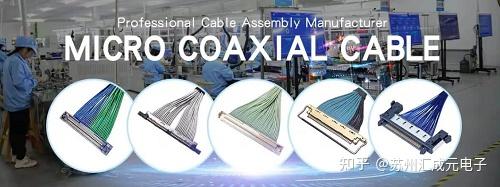Categorization:Harness Component
In today's image transmission systems, CSI (Camera Serial Interface) has become the mainstream standard. Whether it is a mobile phone camera, an automotive image system, or an industrial vision and AI camera module, the CSI interface is the key channel for data transmission. With the continuous improvement of resolution and frame rate, data rates have increased significantly, and signal integrity issues have also become prominent. To achieve high-speed and stable image transmission, extremely thin coaxial cable束 (Micro Coaxial Cable) is gradually replacing traditional FPC or FFC ribbon cables, becoming the ideal choice for high-speed CSI connections.
Why the CSI interface cannot be separated from extremely thin coaxial cable束
CSI interface belongs to high-speed differential signal transmission, especially under MIPI CSI-2, CSI-3 protocols, where the single-channel data rate often reaches several Gbps. Any impedance mismatch, crosstalk, or electromagnetic interference (EMI) can cause image instability or even frame loss.
Traditional FPC/FFC ribbon cables are thin, lightweight, and low-cost, but their shielding ability is limited, especially in long-distance transmission or complex wiring scenarios, where they are prone to external interference.
In comparison, each signal line in the ultra-fine coaxial cable bundle has an independent shielding layer, which is equivalent to constructing an independent tunnel for each signal line. This not only prevents external interference but also strictly controls the impedance consistency. This is crucial for high-speed differential signals.
In other words, CSI high-speed signal transmission is like racing cars on a highway, FPC is like an open ordinary highway, while coaxial cable is a closed tunnel—the difference in stability and efficiency is evident.
In applications, extremely fine coaxial cable bundles are almost standard.
In vehicle image systems such as ADAS, surround view, and reversing images, a vehicle often has multiple cameras, the transmission distance of which often exceeds one meter, and the requirement for signal anti-interference ability is extremely high. Nowadays, almost all large car manufacturers use extremely thin coaxial structures for their camera cables.
In the field of industrial vision and AI modules, multi-channel synchronous acquisition has extremely high requirements for timing accuracy. Even slight deviations in cable impedance and length can cause timing differences. The coaxial structure can ensure signal synchronization, stable transmission, and also has flexibility and durability.
Many camera module tails are FPC structures, but in fact, the end of the FPC extends Micro Coax lines to connect the motherboard, realizing the final transmission of high-speed signals.
Three, key engineering points for designing CSI harness
When designing the CSI high-speed channel, in addition to selecting high-quality ultra-fine coaxial cables, attention should also be paid to the following points:
Impedance continuity: The entire transmission path (cable, connector, solder joint) must be impedance matched; otherwise, signal reflection is likely to occur.
Reasonable wiring and length control: differential lines should maintain symmetry to avoid uneven delay; the shorter the line length, the more favorable it is for signal integrity.
Connector compatibility: It is recommended to use high-speed connectors compatible with Micro Coax such as Hirose, I-PEX, etc., to ensure the high-frequency performance of the signal interface.
The high-speedization of the CSI interface has become an inevitable trend, and the ultra-fine coaxial cable束, with its outstanding electrical performance, compact structure, and excellent anti-interference ability, has become the standard solution for high-speed MIPI CSI signal transmission. Whether it is in intelligent vehicles, industrial vision, or AI edge devices, it is the "invisible core channel" ensuring the stable operation of high-speed image systems.
I am[Suzhou Huichengyuan Electronic], Long-term focused on the design and customization of high-speed signal cable harnesses and ultra-fine coaxial cable harnesses, committed to providing stable and reliable high-speed interconnection solutions. If you have any related needs or want to learn more, please contact:Manager Zhang 18913228573 (WeChat number same)。